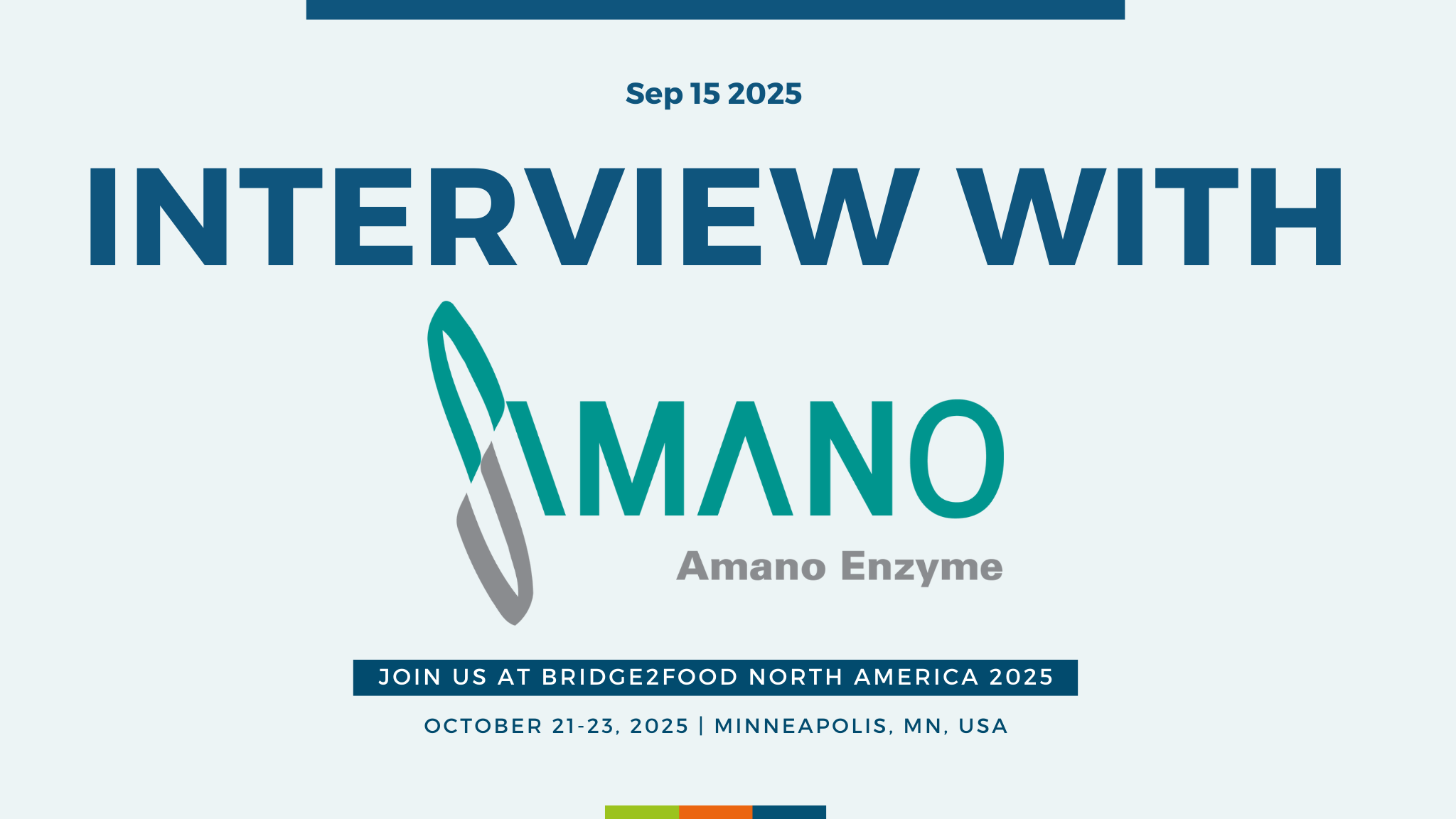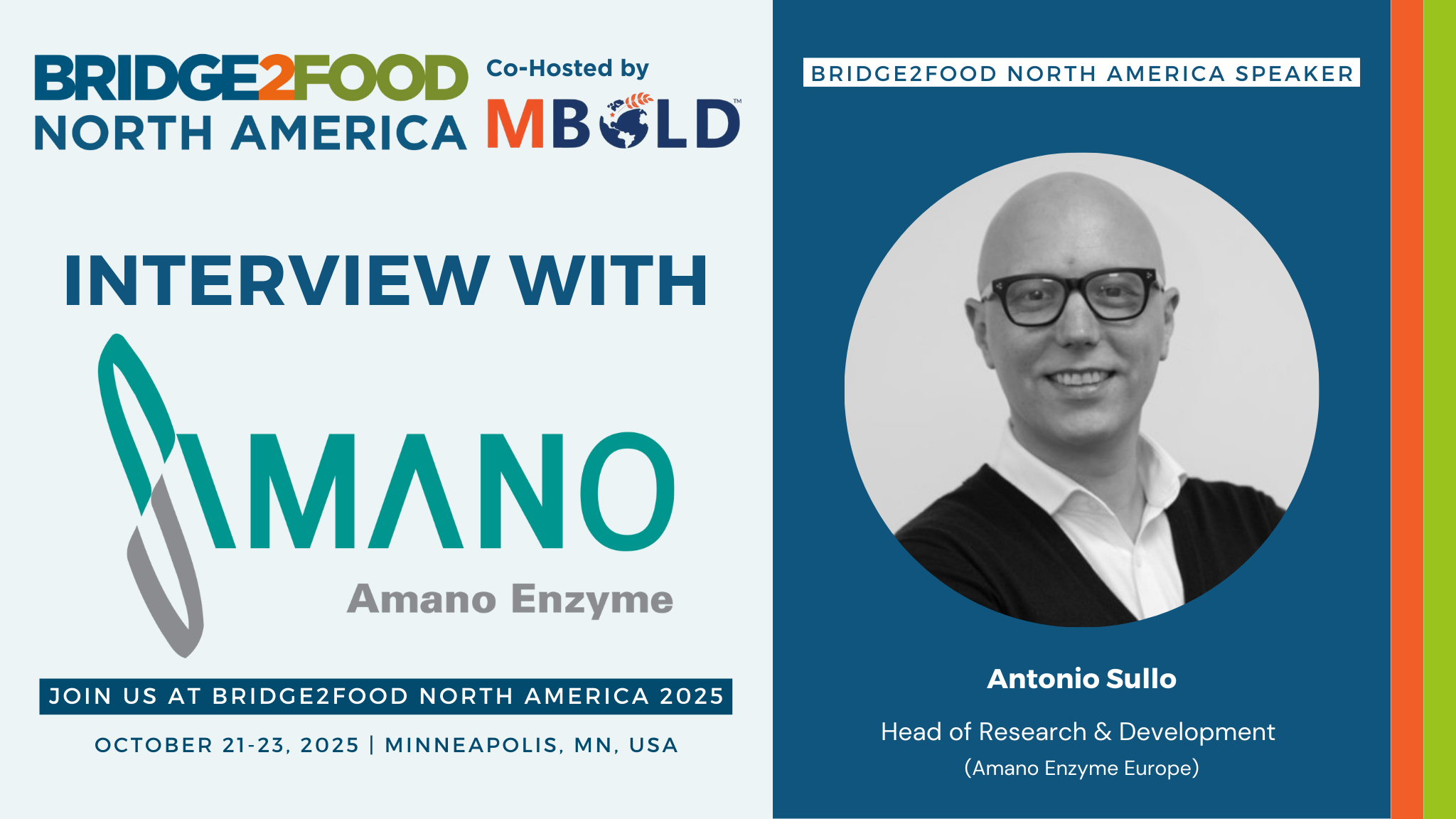

After your successful participation in Bridge2Food Europe, what draws Amano Enzyme to expand your presence to the North American market through Bridge2Food North America 2025?
We were excited that we connected with R&D scientists, product developers and innovation leaders to exchange ideas, share our enzyme-based solutions and learn more about their challenges. We’re hoping that Bridge2Food North America will provide us with the same collaborative environment to explore the plant-based market in North America.
Your session introduces "Plants Unlimited™" enzyme technologies for plant-based applications. What's the core innovation behind this platform that you're most excited to share with attendees?
Plants Unlimited™ is our portfolio of enzymes specifically tailored to plant-based applications. From this portfolio, we are most excited to share Protein Glutaminase “Amano” 500 (PG500). PG500 is a specialty protein deaminase that improves the solubility and stability of plant-based proteins of dairy alternatives in acidic environments, significantly reducing separation and curdling in acidic applications like coffee.
PG500 is supported by over 60 patents, 10 published papers in peer reviewed journals and is available for use in 44 countries. Like the rest of our Plants Unlimited portfolio, PG500 is organic and non-GM compliant as well.
What makes Amano's approach to enzyme development unique, and how does this help food companies achieve their innovation goals?
At Amano, we combine our long experience with natural fermentation with the latest tools in bioengineering. This gives us the flexibility to design enzymes that meet very specific needs and to move quickly when customers face new challenges. Often, we help companies solve problems they didn’t know had a solution.
For example, our enzyme PG500 prevents plant-based drinks from curdling in coffee while also improving foaming — making it possible to enjoy barista-quality plant-based lattes without adding extra ingredients to the label. By working closely with customers and adapting to their goals, we help them bring better products to market and open up new ideas for innovation.
What trends are you seeing in the North American market that create new opportunities for enzyme technology?
Sustainability and cost savings are big topics. Plant-based and alternative sources of proteins are key areas in sustainability, of course, and as you can see from our Plants Unlimited platform, this is an active area for us. However, enzymes can be used to support sustainability in multiple ways.
From getting more out of your raw materials, to improving efficiencies in production to utilizing and upcycling waste streams, there are so many ways that enzymes can help. In addition, our organic and non-GM compliant enzymes can help support these initiatives while meeting labelling requirements.
What do you think makes Bridge2Food North America 2025 particularly valuable for professionals working in sustainable food innovation?
We like the overall format of this event – the combination of the educational sessions, the tradeshow like atmosphere and the networking opportunities allow us to connect with different professionals in various roles all with diverse ideas. We’re looking forward to engaging and having conversations with other attendees with common goals.



